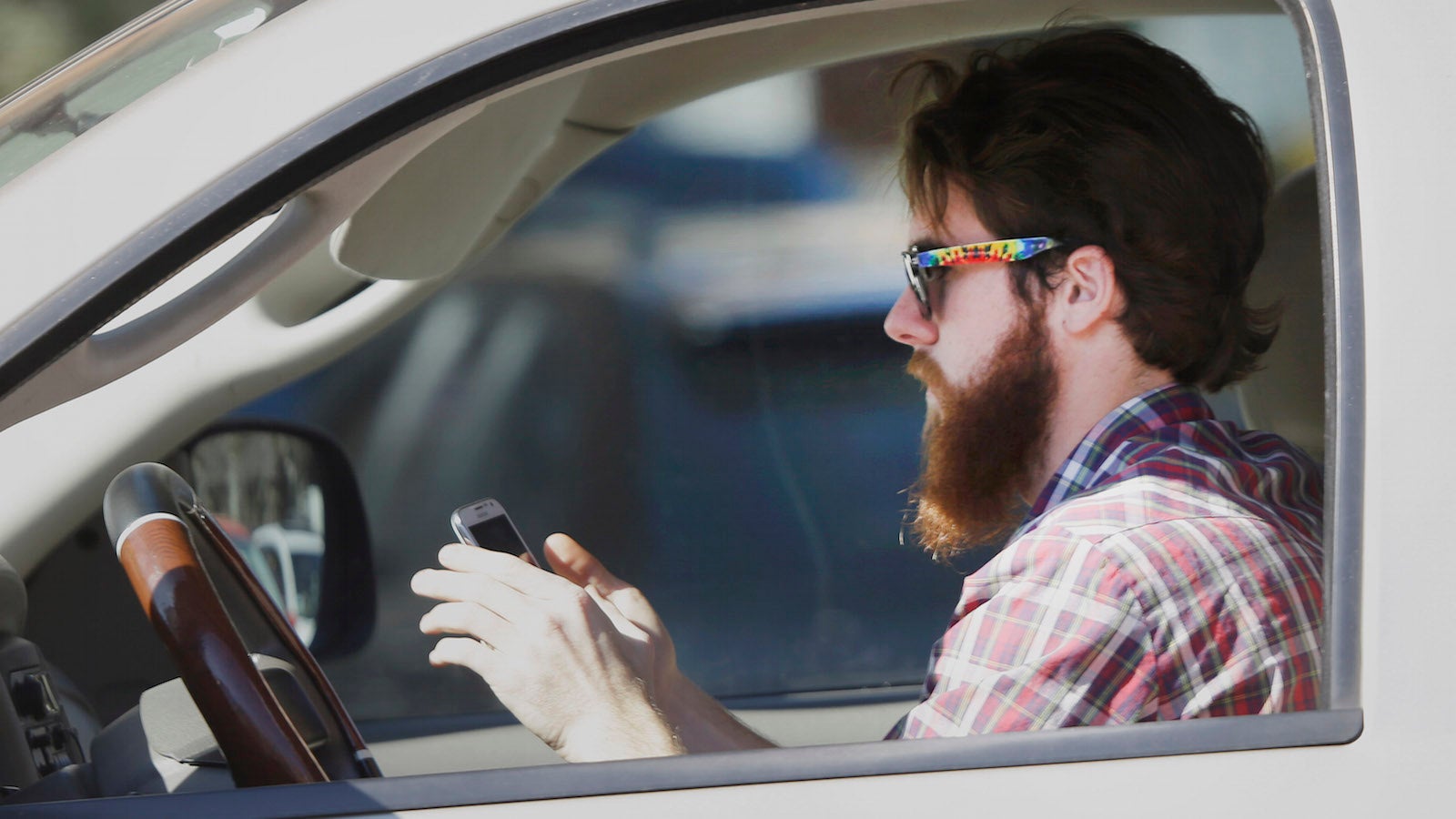Distracted drivers may actually benefit from using tech while driving
In an age where cars are equipped with rearview cameras, automatic brakes, and sensors that alert us if we get too close to another car, you’d think America’s highways would be virtually accident free. Yet we couldn’t be farther away from that reality.


In an age where cars are equipped with rearview cameras, automatic brakes, and sensors that alert us if we get too close to another car, you’d think America’s highways would be virtually accident free. Yet we couldn’t be farther away from that reality.
Despite massive technological innovations, America has seen more accidents on the road in 2016 than in almost a decade. In fact, last year was the first time since 2007 that more than 40,000 people died in car accidents in a single year, making the two-year increase in motor fatalities the largest in half a century. In 2016 alone, an estimated 4.6 million roadway users required medical attention, which cost Americans $432 billion dollars.
The cause of the spike? People are glued to their phones, and being behind the wheel is no exception. We’ve never been great multitaskers, so our attempt to divide our attention while driving has serious ramifications. The consequences of distracted driving affect everyone, yet we lack a sense of urgency to remedy this growing epidemic: Over 96% of people think they are safe drivers, yet 61% of people have used their phones while driving in the past 30 days. As we hear about car crashes streamed to Facebook Live and speeding documented using Snapchat’s miles-per-hour filter, it’s clear that Americans have yet to master in their cars what has otherwise become a natural part of our lives: new technology.
For the most part, technology has been a detriment to our driving, luring our attention away from the road in front of us. From fiddling with our GPS system to exploring new radio stations, innovations that have made driving a more enjoyable experience have also made it a more dangerous one. Despite millions of dollars spent on educational campaigns, distracted driving hasn’t conjured the level of attention that drunk driving has, though many argue it’s equally as dangerous: Taking your eyes off the road for five seconds going at a speed of 55 miles per hour is the equivalent of driving the length of an entire football field with your eyes closed.
Consumer tech such as hands-free texting or screens that display phone notifications more safely are bandages, not cures, to this problem. Companies are focused on creating products that make using our phones while driving safer, but what we really need is technology that holds us accountable for our driving behaviors and encourages us to focus on the road, not our phones.
Safety is obviously a priority when people get behind the wheel, yet almost half of drivers still feel comfortable texting manually or through voice controls while driving. This is a leading cause of car accidents, with over a quarter of crashes involving drivers talking and texting on cellphones. Currently, 46 US states have laws banning texting and driving, with penalties varying from license violation points to minor fines. States also have varied laws based on driving experience, with 38 states banning all cell-phone use by novice drivers, who are typically drivers under 18 years old. However, no state has yet banned cellphone use outright. The lack of a consistent, strong policy across states leads drivers to flout these rules, and too many risk paying for it with their lives.
With summer quickly approaching and post-graduation driving classes underway, we’re preparing to usher in a new generation of drivers. As digital natives, today’s teens have grown up with a cellphone in hand, making it all the more important to raise awareness of the dangers of distracted driving; AAA found that teens were distracted almost a quarter of the time they were behind the wheel, texting, responding to emails, or switching up the music.
People understand the statistics, but they need to be held accountable through a combination of laws and technology in order to see a real decrease in distracted driving. There’s currently no texting equivalent of a breathalyzer, which means there’s a lack of hard evidence to crack down on phone usage behind the wheel.
Instead of endangering lives, technology could help keep people accountable. We need to implement systems that analyze driver behavior and alert family and friends when drivers are braking or accelerating too hard and speeding. The National Highway Traffic Safety Administration has suggested that phone manufacturers create a “driver mode” similar to airplane mode that would limit smartphone use behind the wheel. This suggestion is becoming a reality, with Samsung launching an app that detects when users are driving and sends automated responses to calls and texts while on the road. Other companies are following this trend, with Nissan recently launching a signal shield that prevents distracting phone notifications.
We currently have the technology to help detect and prevent distracted driving, and while we wait for autonomous vehicles to take human error out of the picture completely, we need to start implementing these solutions now. This way, we can use technology to prevent distraction behind the wheel, not make it easier.